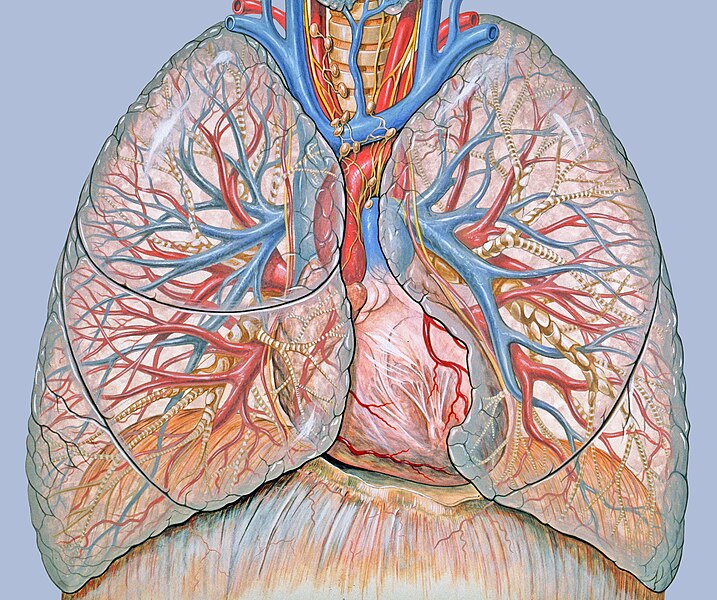UPF and Côte d’Azur University establish that the inclination with which the pulmonary veins reach the heart influences the risk of thrombi
UPF and Côte d’Azur University establish that the inclination with which the pulmonary veins reach the heart influences the risk of thrombi
The research by UPF and the Inria Epione research institute, linked to Côte d’Azur University, has used a sample of 130 patients, the largest to date, to investigate the relationship between the morphology of each individual’s heart and pulmonary veins and the risk of suffering thrombi.

The shape of the heart cavities and the angle at which the pulmonary veins reach them are not always the same, rather they vary according to the anatomical characteristics of each subject. Recently, leading research by UPF and the Inria Epione research institute, linked to Côte d’Azur University, has analysed how these morphological characteristics condition the risk of suffering thrombi in the heart among patients suffering from atrial fibrillation, the most frequent type of arrhythmia and one of the main causes of thrombi.
The study establishes that the risk of blood clots among this group of patients is influenced by the shape of the heart cavities and especially by the angle at which the pulmonary veins reach the left atrial appendage: a small ear-shaped cavity found in this part of the heart. Their conclusions have recently been published in an article in the journal Scientific Reports (Nature).
The relationship between the morphological characteristics of the heart and pulmonary veins and blood circulation patterns had scarcely been investigated until now, and only on a very small cohort. In fact, the sample for this research, consisting of 130 patients, is the largest ever used in studies of this type. The principal investigators of the study are Oscar Cámara, head of the PhySense (Sensing in Physiology and Biomedicine) research group of the UPF Department of Engineering, and Maxime Sermesant, director of computational cardiology at the Inria Epione centre at Côte d’Azur University.
Thrombi, the subject of this research, are the result of blood stagnating in the left atrial appendage, which can lead to serious health issues such as stroke or even death. Thrombi can be triggered by a variety of factors and, in fact, one of the main risk factors today is atrial fibrillation, which alters the normal rate at which the heart should be pumping blood. However, it is not known why some patients suffer from atrial fibrillation but do not develop thrombi while others do.
This research shows that pulmonary vein orientation could be key to explaining blood velocity and why it stagnates, or not, in the left atrial appendage.
The morphological characteristics of patients who have suffered thrombi have been compared with those of others who have never suffered them
The sample of 130 subjects included one group that had developed blood clots and another that had never suffered from them. The goal, with the support of personalized computer simulations, was to determine whether there were any morphological differences in the heart and the pulmonary veins between groups, as well as variations in their blood circulation patterns. To achieve this, the researchers measured several parameters of each patient related to the anatomical characteristics of the left atrium and its appendage; the angle, configuration and number of pulmonary veins (the number also varies from one individual to another); blood circulation patterns; blood flow monitoring particles, etc.
Jordi Mill (UPF): “The results of our research pave the way towards a better stratification of patients at risk of stroke among people suffering from atrial fibrillation”
As a result of this analysis, the research has concluded that the angle at which the pulmonary veins are oriented towards the left atrial appendage is of major importance for the flow of blood and, therefore, the risk of thrombus formation. Differences have been detected between the two groups of patients (with and without thrombi), especially with regard to the alignment of the left superior pulmonary vein and the right pulmonary vein.
Jordi Mill, lead author of the article that presents the results of the research and a researcher with the PhySense group at UPF, concludes: “The results of our research pave the way towards a better stratification of patients at risk of stroke among people suffering from atrial fibrillation, as well as more precise treatments to prevent and treat cardiac thrombosis in the left atrium”.
Reference article:
Mill, J., Harrison, J., Saiz-Vivo, M. et al. The role of the pulmonary veins on left atrial flow patterns and thrombus formation. Sci Rep 14, 5860 (2024). https://doi.org/10.1038/s41598-024-56658-2
